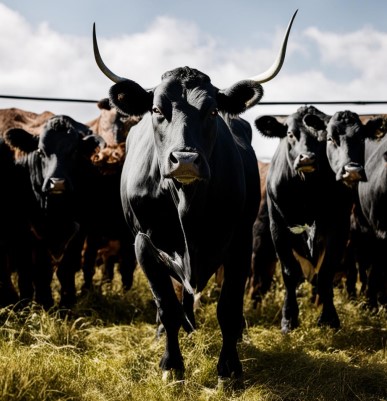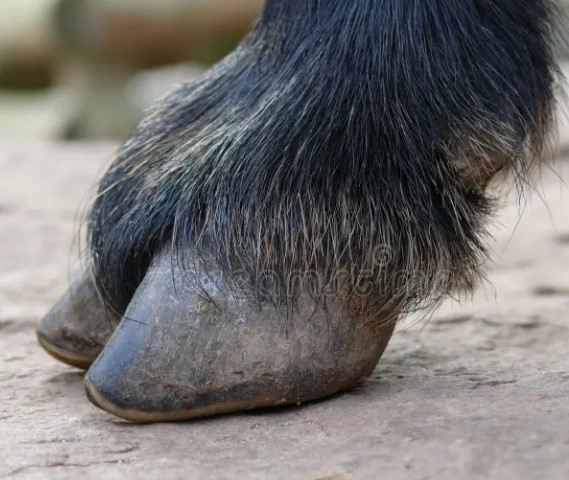Anthrax is a particularly dangerous infectious disease of animals and humans.
The disease in animals is hyperacute, acute and subacute, and in pigs it is asymptomatic, mainly in a local anginal form. The disease in humans most often manifests itself as an infection of the external integument and is only occasionally complicated by anthrax sepsis: at the same time, a primary generalized infection can also develop, manifesting itself in pulmonary or intestinal forms. The causative agent of the disease is a spore-forming microorganism that, under certain conditions, is able to multiply in the soil and maintain its vital activity for decades.
The source of the infectious agent is a sick animal. The secretions of diseased animals (feces, urine, bloody discharge from natural orifices) contain bacilli that turn into spores when exposed to air. Plots of soil and other environmental objects containing anthrax spores are reservoirs and transmission factors of the infectious agent for a long time.
The main route of infection for animals is through feed and water. Airborne infection is also possible through blood-sucking insects.
Human infection occurs when caring for sick animals, in the process of slaughtering them, skinning, butchering carcasses, cooking MEAT, cleaning and destroying corpses, during storage, transportation, primary processing and sale of animal raw materials containing the infectious agent. It is possible to infect a person through contact with infected soil, as well as airborne and transmissible routes.
Source: Rostov Reference Center of ROSSELKHOZNADZOR
Read together with it:
- Россия зарегистрировала новый штамм вируса, вызывающего диарею у крупного рогатого скотаВ текущее время существующие профилактические меры в основном основаны на штаммах первого генотипа, в то время как во многих странах фиксируются случаи заболеваний, связанных с вирусом второго генотипа. В России вакцин, охватывающих оба типа возбудителя, пока нет. Патент, зарегистрированный 21 августа, представляет собой важный шаг в обеспечении отечественного животноводства современными средствам...
- Pork producers from 20 US states are calling on Congress to consider Proposition 12.This law prohibits the sale of pork in California that does not meet local animal welfare standards, regardless of its origin. it also requires sows to be housed in a minimum of 2.2 square meters of space per animal . Impact on family farms and pork prices During a visit to the Capitol, pork producers met with lawmakers and consultants to explain how the requirements imposed by Proposition 12 will...
- Мексика: Глава Министерства сельского хозяйства уверен в возобновлении экспорта скота в СШАФедеральный чиновник также объявил о включении Чиуауа и Тамаулипаса во второй этап Комплексной программы производства мяса и сообщил, что, начиная с 2026 года, он запустит серию президентских программ по укреплению самообеспеченности белой кукурузой, фасолью, молоком, рисом и мясом. На открытии 22-го Глобального агропродовольственного форума «Будущее продовольствия» , организованного Национальным ...
- Buffalo Farming in Colombia: From Exotic Species to Golden OpportunityIn Colombia, the buffalo market has grown significantly in recent years, becoming an unrivaled alternative for cattle farmers. According to the ICA (National Institute of Agricultural Research), the buffalo population has increased by 60.1% over the past six years, from 336,417 HEAD in 2018 to more than 617,......
- Farms in Tomsk District of Tomsk Region are stockpiling feedDeputy Governor of Tomsk Region for Agro-Industrial Policy and Nature Management Mikhail Ratner, together with representatives of the regional department for socio-economic development of the village, visited large farms in Tomsk District. The working trip began with a visit to the Trubachevo greenhouse complex. The agro-complex was built using modern energy-saving technologies and equipped with m...
- Ольга Щербинина из Городецкого округа стала одним из победителей 29-го Всероссийского конкурса операторов машинного доения коровНижегородка завоевала первое место в категории «Женщины со стажем от 17 до 25 лет». Оператор машинного доения коров колхоза им. Куйбышева Городецкого муниципального округа Ольга Щербинина заняла первое место среди женщин-участниц со стажем от 17 до 25 лет на 29-м Всероссийском конкурсе операторов машинного доения коров. Соревнования проходили на базе фермы АО «Шихобалово» в Юрьев-Польском районе и...
- Argentina's Meat Exports Fall, But Domestic Prices Remain StableMiguel Schiariti, President of the Chamber of MEAT and Meat Industry and Commerce (CICCRA), provided a detailed overview of the situation in the Argentine meat sector, emphasizing that the decline in beef consumption is not due to a price problem, but to a lack of purchasing power among consumers. In an interview with radio station LU12 AM68......
- Deadly Walk: In Kormyansky District, a Villager Died from Blood Loss after Getting Tangled in a Bull's RopePhoto by the State Forensic Examination Committee, 20 August, MINSK . In the Korma District, an evening walk for a villager ended in death. This was reported to BELTA by Anna Kodolova, official representative of the State Forensic Examination Committee for the Gomel Region. In July of this year, the woman was walking in the company of friends along one of the village streets. Bulls were grazing on...



























































